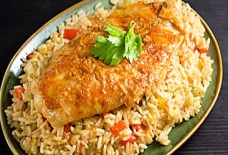Teenage Palestinian artist brings message to US
Faces masked with a kuffiyeh; an elderly Palestinian man staring pensively; a toddler being passed between two women through barbed wires; a child carrying a kitten – these paintings have been on display at the Arab American National Museum, in the US Midwestern city of Dearborn, since 1 October.
The masterfully crafted artwork stimulate a range of feelings, from anger to despair to hope.
And the artist? A 15-year-old boy from Gaza with no formal art education or access to proper supplies.
Mohammed Qraiqae, dubbed the Picasso of Palestine (a title he rejects), brought his art to the United States in the #FreeBird tour of five US cities.
He was introduced to drawing and painting by his older brother at the age of five. By trial and error, he honed his skills and forged his style.
“We have a saying in Palestine, ‘Repetition teaches anyone,’” he told the Middle East Eye. “I would try to paint by myself, like an adventure.”
Qraiqae said art can influence the collective thinking of society.
The Gaza Strip has been under Israeli siege since 2007. The blockade only allows essential items into the enclave under strict scrutiny. Art tools are smuggled and sold at high prices, according to Qraiqae.
The teenage artist has lived through successive wars on Gaza, including the devastating Israeli war in 2014, when his neighbourhood of Shuja’iyya was targeted with shelling and airstrikes that killed at least 120 people.
He said he had to leave the neighbourhood with his family at dawn after the battle started, describing desolate scenes of death and destruction.
“It was a terrible situation – bombs were falling, people were dying, buildings were collapsing, and we were running,” he said.
Qraiqae said he stayed with more than 100 displaced children. At 13 years old, his task was to ease the fears of those younger than him.
“I painted on my cousin’s face,” he recalled. “We would play with the children to get their minds off the war. We would tell them the bombs were fireworks.”
Qraiqae said one of the biggest challenges to his work are the frequent power cuts.
“Once I was painting, and we lost power,” he said. “I continued without seeing or knowing what I was doing. I ended up with a green background and a fox, a lion and a rooster. I didn’t know why I painted them.”
With almost 200,000 followers on Facebook, Qraiqae is garnering international acclaim for his art. He has met officials in Turkey, Tunisia and Iran, and showcased his art in countries across the Middle East and North Africa.
As for the Palestinian Picasso title, Qraiqae said he is an artist with his own style. He uses a variety of approaches, ranging from abstraction to hyper-realism.
“I am a quiet boy and reflect my madness only in my paintings,” Qraiqae told MEE early last year.
Free Bird
Qraiqae said the US exhibits are a continuation of a project he started in Gaza.
“It’s called FreeBird because I am the free bird, and I want to tour the world with this exhibit,” he said.
Young artist played with children to help keep their minds off war (MEE/Ali Harb)
At the museum in Dearborn, an elderly American woman walked up to Qraiqae, expressing admiration and concern for his safety.
“You fear for people who stand out,” she said.
Hatem Abudayyeh, the executive director of the Chicago-based Arab American Action Network (AAAN), said Qraiqae was hosted in Chicago through the hard work of individual activists.
Once he arrived in the US, the AAAN and the US Palestinian Community Center, worked to organise and promote his tour.
In Dearborn, Arab Americans, Palestinian solidarity activists and artists surrounded Qraiqae, taking pictures with him and praising his work.
Abudayyeh said the young artist was equally well-received in other cities. Qraiqae has visited Chicago, where he was staying, Dearborn, Milwaukee, Youngstown and Cleveland.
“Part of it is the brilliance of the artwork, that’s first and foremost, but there is more than that,” Abudayyeh told MEE. “The kid is inherently attractive because he’s from alwatan (the homeland); he is from Palestine; he’s from Gaza. He’s 15 years old.”
He also lauded Qraiqae’s intelligence and charisma.
Abudayyeh said Qraiqae is symbolic of the perseverance of the Palestinian people, and also has a “one-in-a-million” talent.
The Palestinian American activist said all forms of expression, including art, have a role to play in the Palestinian struggle.
Art as resistance
Malek Qraiqae, Mohammed’s older brother who is a cartoonist himself, said art is an understated form of peaceful resistance.
“The Western world today looks at the struggle in Palestine as if it’s all weapons and missiles and death,” Malek told MEE. “But the world understands art and aesthetics. We should communicate with them in that language.”
Pointing to one of his brother’s works, he added: “This painting does not need anyone to explain it. It does not need a translator.”
“The world understands art and aesthetics. We should communicate with them in that language.” – Malek Qraiqae
Malek said art evokes emotions, which can bring awareness to the Palestinian cause.
The older brother recalled the difficult times during the 2014 war.
He said while fleeing Shuja’iyya, Mohammed carried pieces of his artwork over his head.
Malek said Mohammed used social media to report stories of the war in a sentimental, personal manner that journalists could not convey.
He said while he and his brother have been lucky to be able to travel, difficulty of movement has restricted other Gaza artists.
But perhaps one the biggest hurdles to art that the siege in Gaza creates is a societal one, according to Malek.
“People do not have the time to pay attention to art because they have more pressing daily needs,” he said. “All the organisations working in Gaza are humanitarian. They focus on essential needs, like food.”


